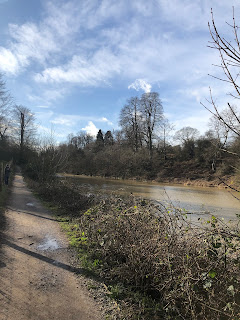Patch Under Water!

I was home from uni for the weekend and took the chance to visit Willington in case of a really early Wheatear or Garganey, but mostly just to see how it was getting on and what was about. I knew the River Trent was flooded along most of its course and packed wellies ready for some flooding. What I wasn't expecting however was knee-deep water even before the car parking area. The entire entrance to the lane was connected to the river and too deep to drive through. Without waders, it would be completely impassable and even then it might be a challenge. This certainly explains the dearth of reports online from Willington online lately and is quite concerning. Who knows how the resident birds will have fared, as the main lake might now be connected to the Trent! I'd be really interested to know if anyone has attempted to get down there and assess the situation, hopefully it's not as dire as it seems from the entrance track. Gutted that we couldn't visit Willington, I ma

